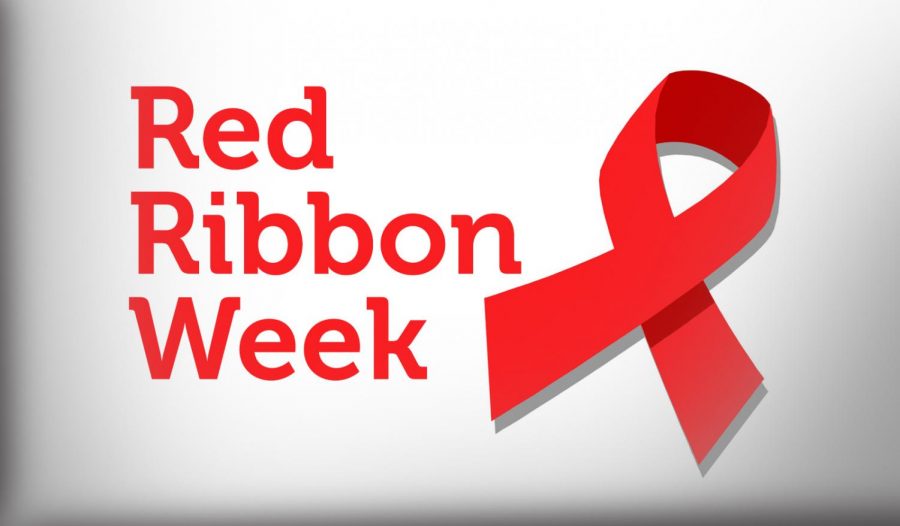Anti-Drug Ed Needs a Dose of Realism
Before we even knew what drugs were as young kids, we were introduced to red ribbon week, a valiant effort by teachers- and now SADD club- to keep students away from drug consumption, but what does it accomplish? Why do we do it and what were the origins?
Starting in 1985 the National Family Partnership started red ribbon week in a response to the murder of DEA agent Enrique Camerena, and the coalition is mainly focused on drug prevention education and anti-drug legislation, effectively making them lobbyists. If this tells you anything about the partnership’s position on drugs, Nancy Reagan, champion of the “just say no” campaign was an honorary chairmwoman of the nonprofit. They lobbied senators frequently in the 1980s for harsher penalties over marijuana possession and dealing, being an integral part in the War on Drugs, which in hindsight likely worsened drug use nation wide and succeeded in overcrowding the nation’s prisons.
30 years later: Is the campaign as effective as it wants to be? Why did it outlast the efforts of D.A.R.E?
For starters, D.A.R.E. was a police-centric program and contained several problematic practices, like encouraging children to report illegal drugs in their home, possibly incriminating their own family members. Over the years, their zero-tolerance policy on drug use equated the dangers of alcohol, cigarettes, marijuana and cocaine. The US government in 2003, American Psychological Association in 1999, and the US Surgeon General’s office in 2001 all discredited the efforts as ineffective long term. This resulted in a reduction of federal funds towards the program. By 2009, the D.A.R.E. program was almost entirely absent from schools, despite still being an active organization.
Red Ribbon Week, though sharing qualities and opinions with D.A.R.E., is very different in its practice. Whereas D.A.R.E. was an intensive 17-week course taught to young students by active duty police officers, the purpose of Red Ribbon Week is to raise awareness for the cause of drug abuse prevention through encouraging parents to talk to their kids and having elementary school kids participate in the Drug Free Pledge.
By high school, its presence is vague. There is a booth by the cafeteria, we have a spirit week some people participate in–and some kids decide to ironically place the promotional bracelets and stickers on their drug paraphernalia. Drug education is difficult to teach seriously in a high school, where various drugs are already prevalent. The “drunk goggles” students can try on at the booth are comical, especially to students who know from experience that’s not how eyesight works when under the influence. The ignorant nature of people who’ve presumably never done drugs, teaching about drugs is destined to result in minimal positive effects, particularly among students who’ve used drugs.
Prevention education, in my opinion, is wholly ineffective among the general population who’ve already been introduced. It’s about as ineffective as abstinence-only sex ed. We are well aware of the vaping problem among teens, and by the time sophomore health class rolls around, some students are already addicted, and it is much more difficult to “Just Say No” after beginning.
Another issue with Red Ribbon Week and what it is supposedly designed to teach, is that it doesn’t teach anything. How is a young child being pledged into the Drug-Free Life supposed to stay drug-free if the program itself doesn’t even teach about what drugs are? As much as the program boosts on its page how it “is a national leader in drug prevention education and advocacy” it doesn’t exactly educate students at all.
In our school, the most I see in terms of red ribbon week drug education, besides trying to teach me the fact that “PJ/Sweatpants day is Monday” and “Living a drug free life is no sweat,” are the posters in the stalls of the bathroom, posters made not by the organization, but by Niles West’s SADD club. If that club didn’t exist, red ribbon week would just be a simple spirit week, and few actual informative facts and statistics would be present.
If this district is serious about actually informing kids about drugs, they need to be honest with us and treat us like adults, not children. To give red ribbon week a purpose, I suggest working with health classes more in-depth, possibly even moving the drug education unit to first semester. Though this is a big change, I’d also suggest the district move health class to freshman year gym, as by late sophomore year I believe several students have already started doing drugs.
We need to not follow in the footsteps of truth.com and use childish puppets or ten-year-old memes and YouTubers to teach minors about drugs. Simply be honest, be real, not flashy. Focus on things kids care about. At our age we don’t have the brain capacity to understand long-term effects of drugs, we can’t comprehend that doing something now will give us lung cancer in our 50s, so scare tactics are ineffective.
These teachers and proponents of red ribbon week need to approach drug prevention from perspective kids understanding: money, friends and free time. Discuss, instead of how juuls contain toxic chemicals we can’t comprehend, discuss how addictive they are, the price, how much money you’ll lose by starting a habit. Take the topic of drugs from the abstract to the real world. Teach students like they’re doing drugs or have easy access to them, which evidently- by the current vaping problem- they do. This will affect their real life, so take the topic seriously.
Red Ribbon Week in its current form, accomplishes nothing. It does not educate, does not prevent, and only succeeds thus far in hanging red streamers throughout the school. If the district wants us as students to really absorb the drug education we’re being bombarded with, tell us honestly, realistically and seriously about drugs, not with a spirit week.
